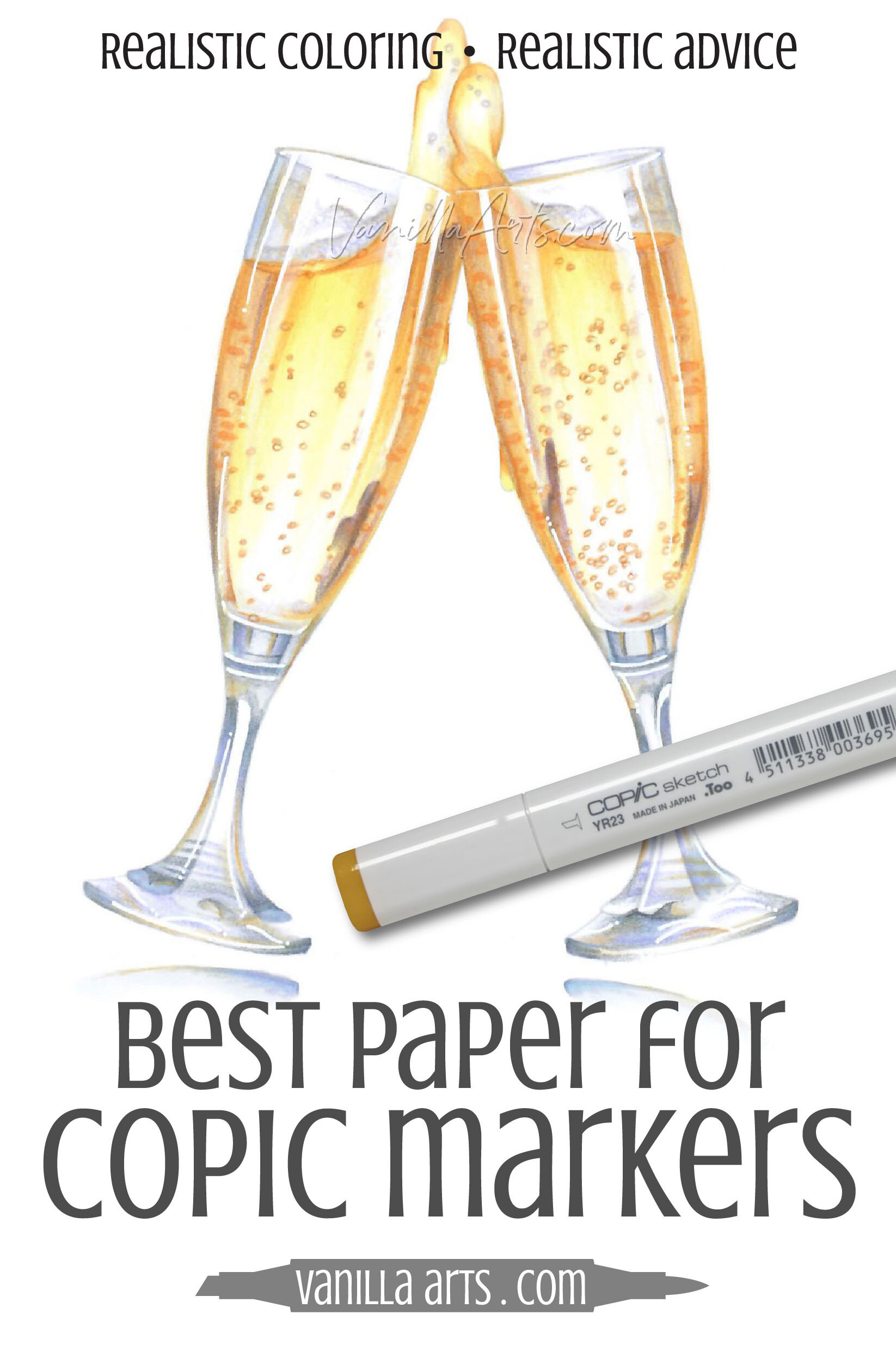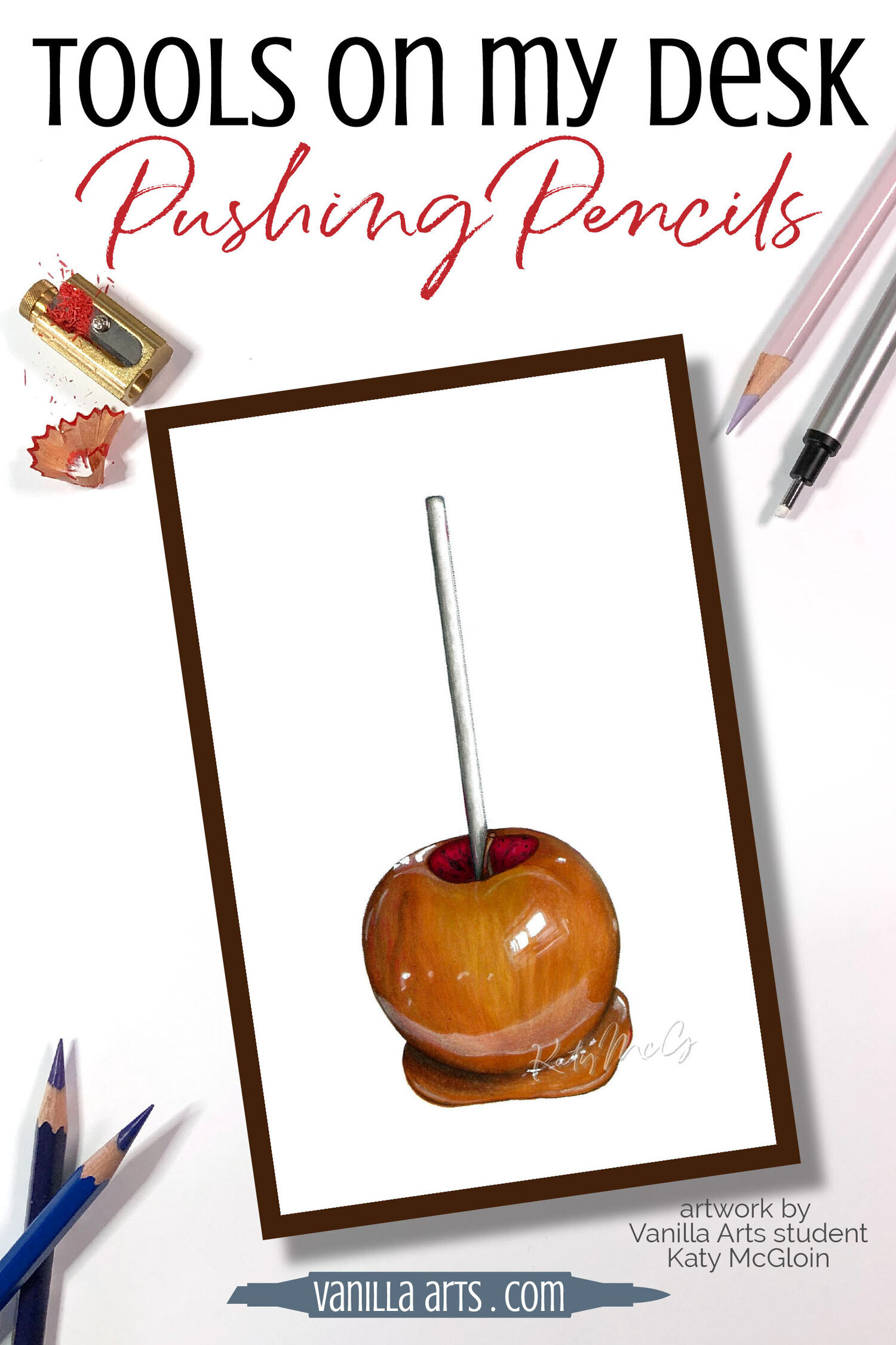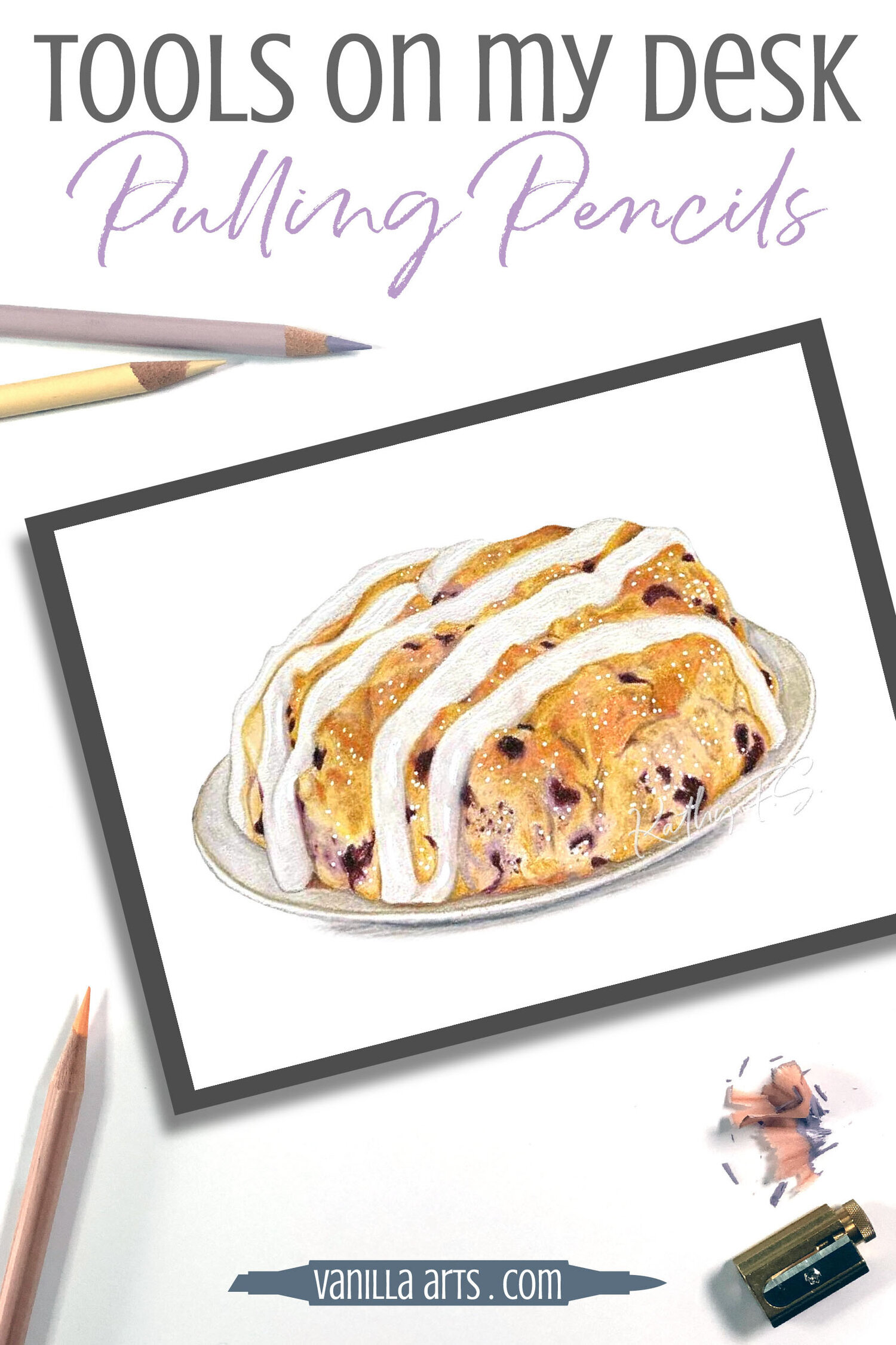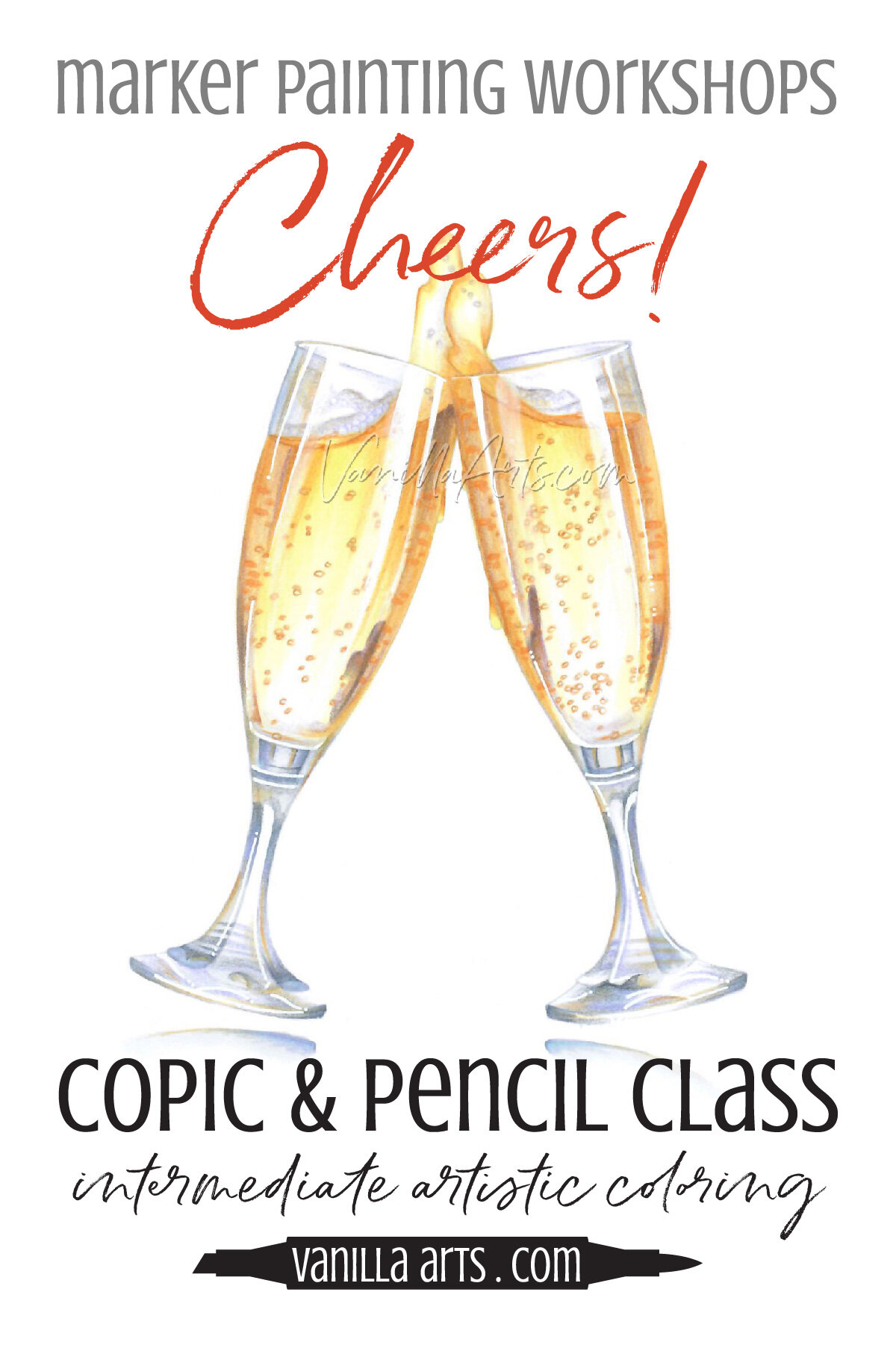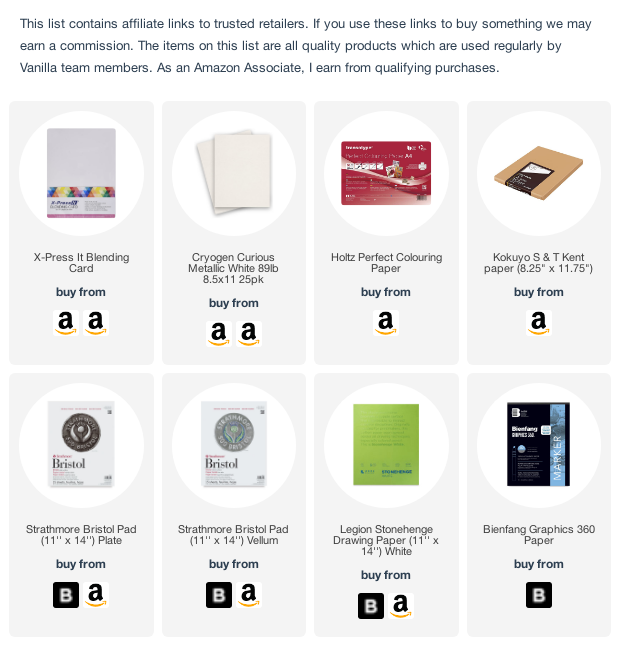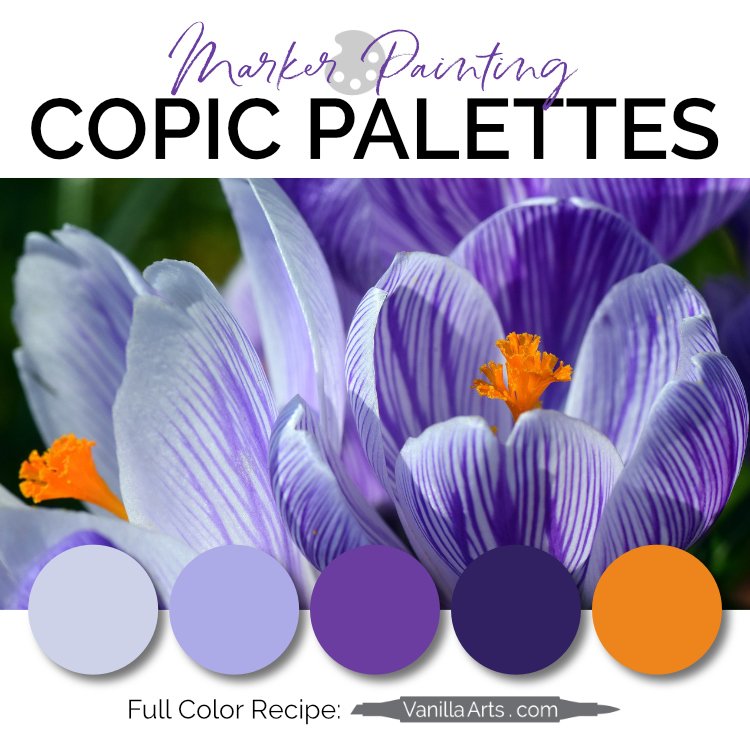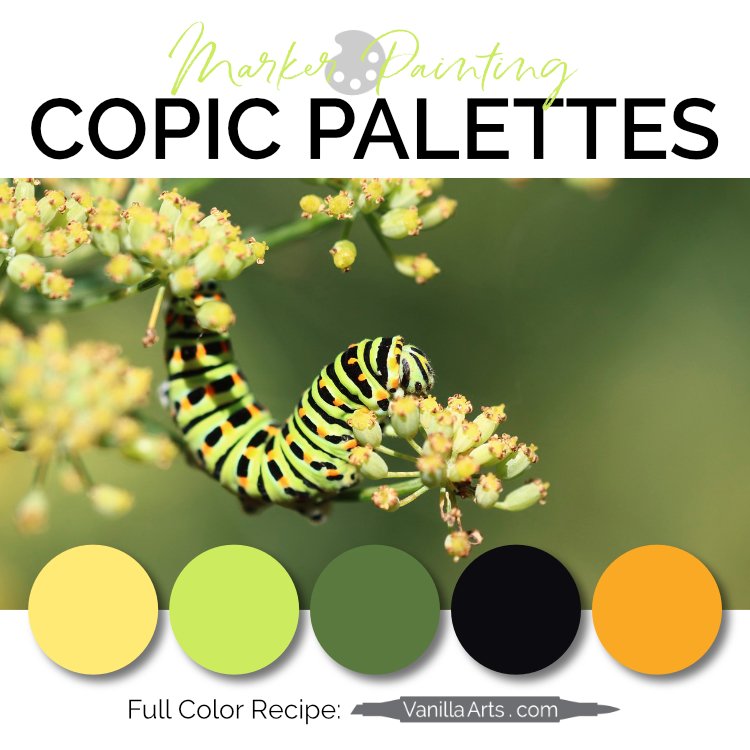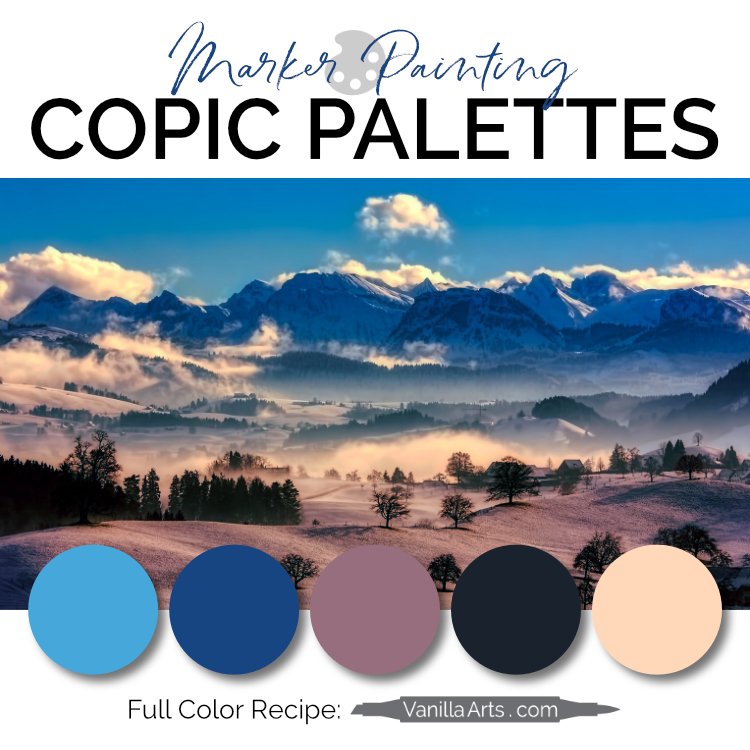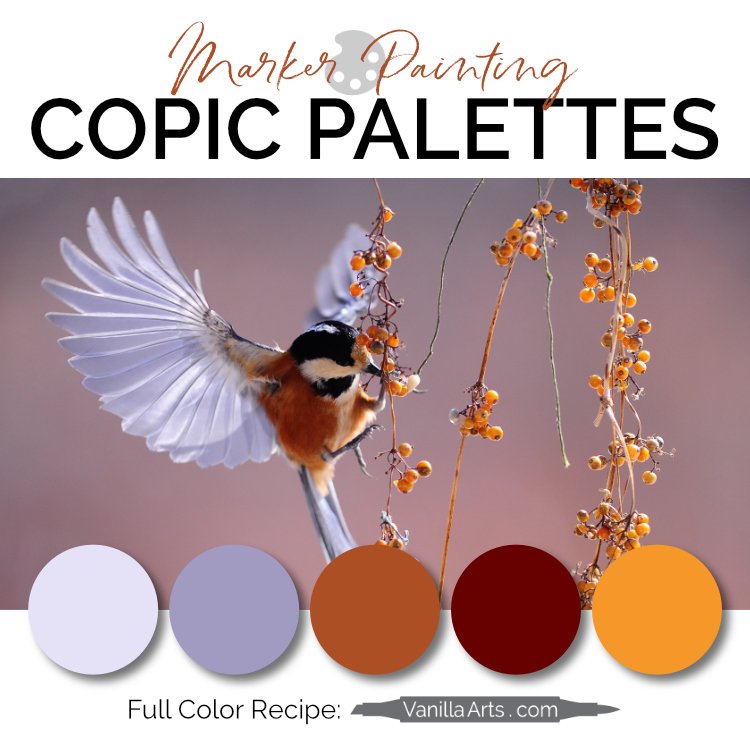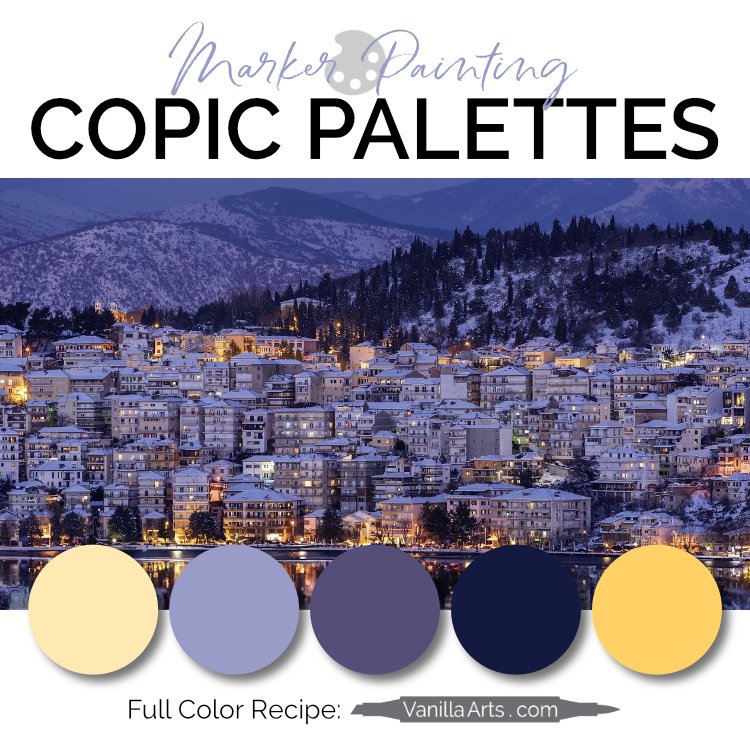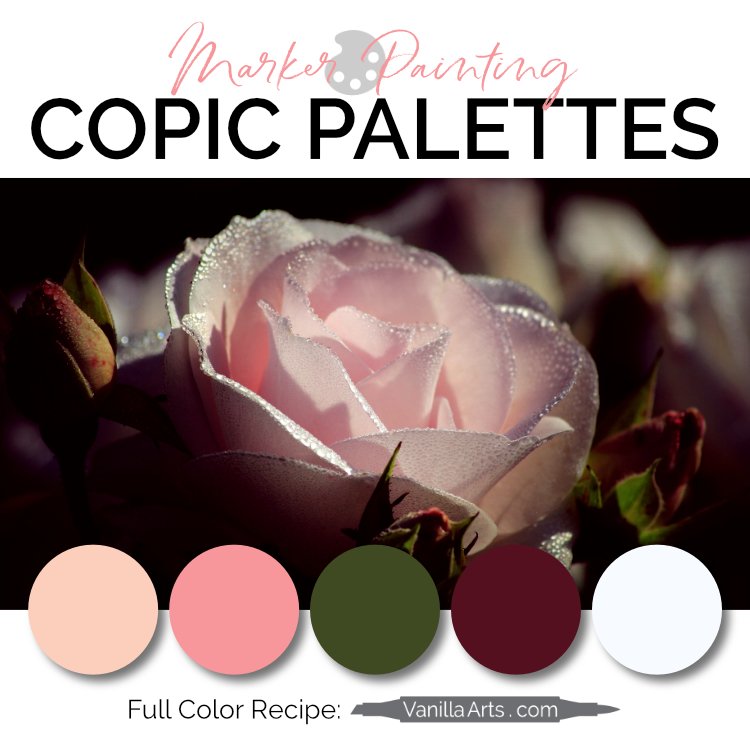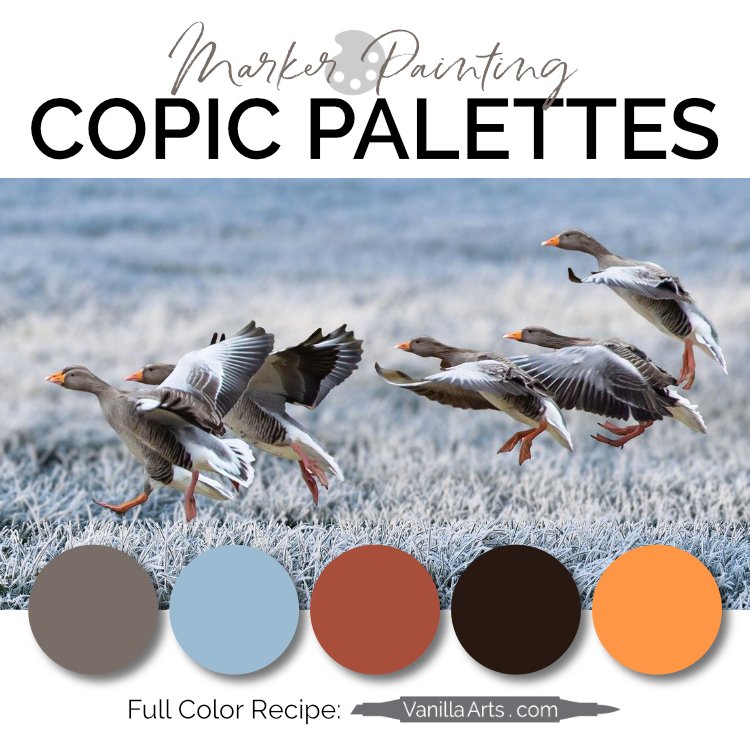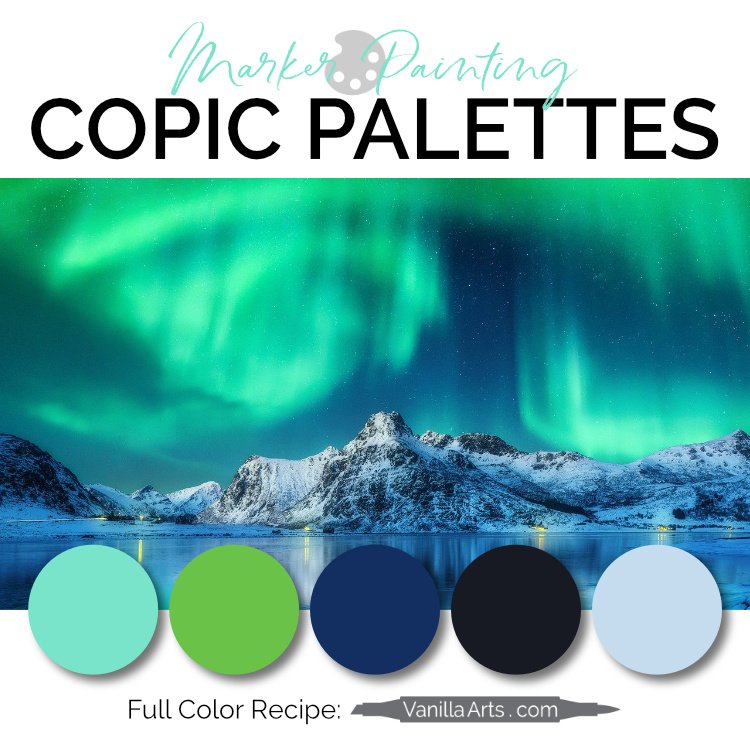Best Paper for Copic Markers: Recommendations from 4 Top Marker Instructors
What is the best paper for Copic Markers?
That’s a loaded question!
The truth is that there isn’t one best marker friendly paper or card stock for everyone, everywhere, all the time. Smart artists match their style of coloring to the paper they use.
What works great for me, might not work well for how you color.
To narrow down the decision and help you find your ideal paper without buying and testing every paper on the market, I’ve talked with three of my favorite marker instructors, asking them:
which papers they work on
which paper they teach on
and which paper they recommend for absolute beginners
Match your coloring style to the instructor’s style and try their recommendations.
There is not one “best” paper for alcohol markers. We asked 4 experienced Copic Marker instructors working in 4 different styles for their top recommendations, which paper they use for beginner classes, and why they love specific papers.
X-Press It Blending Card
Cryogen Curious Metallic White (DISCONTINUED AS OF MARCH 2023)
Strathmore Bristol 500 Series
Holtz Perfect Colouring or Kent Paper
Stonehenge White
Hammermill Premium Color Copy Cover (with reservations)
Best Marker Paper: General Coloring
Michelle Houghton, Copic in the Craftroom & Scrapweaver.com
Michelle is a former art teacher (BS Fine Arts, MA Education) with 20 years of paper-crafting experience. She’s is a former Copic Regional Instructor (Imagination International) and helped create curriculum for the now-disbanded Copic Certification program. Michelle runs the Copic in the Craftroom website and YouTube channel plus she holds Copic College weekend events across the US. Visit her at Scrapweaver.com.
Michelle recommends X-Press It Blending Card
“I love the ability to pile-on layers of ink with little movement across the page and the smooth texture.”
Michelle is what we’d call an all-around colorer which is no surprise given her history with Copic Certifications. In this role, she came into contact with a wide variety of colorers— cards, manga, art journals, illustrators, and misc. professional artists. One has to be highly proficient coloring at every size and in every style to teach general coloring seminars.
For Copic in the Craftroom videos, Michelle works with a variety of clear, cling, and digital stamps. Her projects are sized anywhere from 4” x 5” card sized images to 8.5'“ x 11” pages. She specializes in Copic Blending but also adds Copic Airbrush and clever ink techniques.
Michelle prefers to work on X-Press It Blending Card. It’s an easy-blending card stock which accepts many layers of ink with little bleed-through.
For Michelle’s Copic College events, she takes a slightly broader approach, including samples of both XPI and Hammermill 100 lb. Premium Color Copy Coverstock in her class kits,
“I give [students] both Hammermill and X-Press It. I share the differences between the two, why they may like each, as well as other papers out there! I encourage them to find what works best for their coloring.”
Michelle says some may prefer Hammermill because of the lower price point and greater availability.
“Hammermill is is a good balance between ease of blending and ability to hold ink. It flies through printers for those that struggle with thicker papers.”
For absolute beginners with few markers and little money, Michelle recommends starting with Hammermill.
“But if you’re a good friend just starting out, I would give you a few sheets of X-Press It to experiment with.”
About: Hammermill Premium Color Copy Cover
Weight: 100 lb.
Sizes: Multiple sizes from 8.5 x 11” letter to oversized 19 x 13”
Color: “Super-Bright White” (a neutral white)
Acid free
Accepts stamp inks well, prints beautifully with both ink jet and toner machines
Economically priced
Widely available in stores across the US and Canada plus online
Alcohol inks retain their brightness after drying
Minimal feathering, bleeding, some seep-through at 3-4 layers
Popular with beginners and card makers
CONS:
This is NOT an inexpensive substitute for X-Press It. They have totally different compositions and behaviors. Hammermill allows you to blend cheaply but it’s not an XPI knock-off.
People often purchase the wrong version of this paper as Hammermill packaging and naming is all very similar
Dries relatively fast, making smooth blending difficult at larger sizes. Best with smaller images which are easier to keep wet.
Not a self-blending paper due to fast dry time
Does not withstand as much re-blending as cardstocks developed specifically for markers
Paper fibers stain easily, enhancing the stubborn qualities of some Copic colors
Not recommended for mixing with water-based media
Not recommended for mixing with colored pencil
More Tools:
Looking for reliable supplies? Click to read more Vanilla recommendations.
Best Marker Paper: Small coloring with beautiful details
Mindy Baxter-Saenz, My Creative Scoop
Mindy is a self-taught colorer who found her creative passion with Copic Markers and innovative card making. She’s written tutorials for Magnolia Ink, Score-Pal, and CardMaker and has illustrated for Fun Stamper’s Journey and Whimsy Stamps. Mindy is also a regular contributor with Tonic, Ellen Hutson, Spellbinders, Neat & Tangled, and My Favorite Things. Mindy publishes articles and offers online classes at MyCreativeScoop.com.
Mindy recommends X-Press It Blending Card
“I started using X-Press It card stock more when I was teaching at local stores. It works wonderfully with Copic Markers.”
Mindy is a card specialist using commercial stamps and her own digital stamps. Small images are her forte but she also creates larger innovative background treatments, scenery, and atmospheric elements using Copic Markers.
Mindy previously worked exclusively on Cryogen Curious Metallic White Cardstock. She has since moved to X-Press It only.
“I used to use Cryogen all the time — I love how thick the paper was and how it kept the ink moist longer to blend. I switched to X-Press It when I started using more pattern papers for my classes at local scrapbooking stores. The Cryogen paper didn’t look right with pattern papers since it has a more of an off white tone. X-Press It is more of a true white.”
Mindy’s classes are all presented with X-Press It Blending Card and she highly recommends it for beginners.
“I tell them about XPI and Cryogen. I always say ‘this is what works for me and if you try something different let me know at my next class.’ But for beginners, they will see best results on XPI.”
About: X-Press It Blending Card
Weight: 250 gsm
Size: 8.5 x 11”
Color: “Bright White” (a noticeably cool white)
Acid free
Accepts stamp inks beautifully, prints well with both ink jet and toner machines
Incredibly smooth surface, ink glides over the paper beautifully
No feathering or bleeding
Specialized fiber core retains ink, holds numerous layers before inks seep through the backside
Long “open time” allowing inks to stay moist for best blending (possibly the longest open time of all marker papers)
Considered a “self-blending” paper— marker blends continue to smooth themselves after you’ve moved on to other areas
Amplifies the effects of colorless blender allowing better than average special effects and techniques
Many call this the best of all marker substrates. Has devoted fans in every niche of marker users including professional illustrators and artists.
CONS:
Not available world-wide, can be hard to find in some parts of Europe, South Africa, and Japan
Can be difficult to feed through some office printers (rare but it happens with a few finicky printers)
Inks lose a bit of vibrancy
There’s a semi-resistant fleck to the paper which results in extremely tiny uncolored spaces (only noticeable when images are viewed at nose-length or when digitally enlarged)
Warning for die cutting— if you cut first and color second, ink seeps in through the cut edge directly into the core fibers. This creates a darker halo around the die cut. Directly coloring the edge (like blackening the edge of a die cut) can create spider veins.
DO NOT use with water-based media! XPI bubbles and blisters on contact with water
Not recommended for mixing with colored pencil, many brands of colored pencil will not adhere to XPI
This article contains affiliate links to trusted retailers like Blick.com, Violeta-Ink.com, and Amazon.
Vanilla Arts Co. is a participant in the Amazon Services LLC Associates Program, an affiliate advertising program designed to provide a means for use to earn fees by linking to Amazon.com.
Best Marker Paper: Large scale or vibrant coloring
Elena Cazares, Violeta-Ink.com
Elena learned to color from online classes at Vanilla Arts and turned her marker passion into Violeta-Ink.com, an Authorized Copic Retailer. She hosts a series of Copic Marker education and Copic blending videos at YouTube and publishes color swatches regularly at VanillaArts.com. Visit Elena at Violeta-Ink.com
Elena loves Cryogen Cardstock for Copic Markers
“I learned to color on X-Press It Blending Card but I’ve moved to Cryogen for all my personal projects. I still teach blending on XPI but if I want to add pencil, I must work on Cryogen.”
Unfortunately, Cryogen was discontinued in 2023. Elena and many other fans stocked up and you’ll still find occasional lots for sale online.
For Elena, Cryogen was a perfect dual-use paper which allows Copics to blend smoothly but also has tooth for several layers of pencil over the top. Elena prefers to color larger images with bold expressive strokes and purchases Cryogen in 12 x 18” sheets.
When asked about any faults to Cryogen, Elena explained
“It has a slight bleed to it but bleed actually makes it possible for me to blend oversized images. It also has a bit of texture which accepts several layers of colored pencil, and even some water-based white pen if I want. Plus Cryogen is sparkly and the inks look vibrant! It’s just the perfect paper for me.”
Cryogen was not discontinued due to lack of sales; the parent company went out of business. We’re not without hope though— it’s not unusual for other paper companies to purchase the process information and recreate popular papers. Cryogen was also a popular paper for embossed wedding invitations so there’s certainly a market to bring it back. We’re crossing our fingers that someone resurrects Cryogen soon. We will update this article if this happens.
Elena used Cryogen in her personal projects but for lessons, she turns to another standby favorite:
Elena’s video demonstrations are all on X-Press It.
“Beginner blending looks better on XPI. And because XPI makes blending easier, I test all my crazy underpainting combinations on it.”
Elena recommends X-Press It for beginners.
“I always recommend XPI for beginners because I don’t want them to be discourage by not blending well. It’s just easier to learn on XPI.”
About: Cryogen Curious Metallic White
(DISCONTINUED as of March 2023)
Note, Cryogen is no longer in production because the parent company closed. It’s not unusual for other paper companies to purchase the process information and recreate popular papers. We’re crossing our fingers that someone resurrects Cryogen soon. We will update this article if this happens.
Weight: 89 lb. (240 gsm)
Sizes: various sizes up to 27 x 39”
Color: “White” (noticeably warm)
Surface has a pearlescent sheen with a subtle metallic fleck
Acid free
Accepts stamp inks well, prints well with both ink jet and toner machines
Slightly textured surface but not enough to make markers drag
Slight feathering may shock first-timers but it’s consistent and predictable, so it’s easy to learn the ideal Cryogen technique
Long “open time” allows inks to stay moist for best blending
Considered a “self-blending” paper— marker blends continue to smooth themselves out after you’ve moved on to other areas
The slight bleed to Cryogen allows very smooth transitions from a light colored marker to uncolored white paper. Normally you have to ease the transition with colorless blender, this is not necessary on Cryogen.
Inks stay vibrant after drying
Ideal for mixed media projects- accepts some water-based media and toothy enough for colored pencil
CONS:
Availability issues.
Confusing— Cryogen comes in two weights, only the 89 lb “cover stock” is suitable for markers. The thinner version is not recommended but often confused when ordering online.
Not everyone appreciates the metallic fleck (it’s very subtle but can show up on scans and enlargements)
Off-white color stands out next to truly white paper
BUYER BEWARE: There are online retailers who repackage Cryogen and sell it as their house brand of unique “premium” card stock. If the product description says “shimmer”, “slight sparkle”, or “creamy white color”, they’re talking about ordinary old Cryogen. You can buy Cryogen inexpensively from the same supplier they use.
Best Marker Paper: Professional or Mixed Media
Amy Shulke, Vanilla Arts Co. and MarkerNovice.com
Hey, that’s me!
I’ve got a love-hate history with markers dating back to my first Marker Indication class at art school (BFA Illustration). Copics have been an important tool for me professionally. I’ve tried a lot of paper over the years for technical illustration and personal projects. I always use markers in combination with colored pencil but that doesn’t mean I like any of the mixed media papers. I usually end up using traditional papers non-traditionally.
I work on a combination of papers including X-Press It, Cryogen, Bristol Board, and illustration papers
Smooth blends are not my top priority, so I’m willing to compromise on the ideal marker paper to get more tooth for colored pencil. The one thing I absolutely can not tolerate is an absorbent paper— I hate wasting expensive Copic ink!
Please note, my projects are almost always larger in real life than you expect. My average project is 11 x 14”.
My beginner Copic classes all use X-Press It Blending Card and it’s required for my 12 week beginner course.
I honestly believe everyone should start on XPI, it self-blends allowing students to quickly master good blending technique. I start beginner students on 4 x 5” digital images but we quickly ramp up to filling entire 8.5 x 11” sheets. X-Press it allows my students to color large yet smooth images with minimal re-blending.
My intermediate to advanced classes use Cryogen cardstock.
We move to Cryogen because it’s toothier for colored pencil and it’s available in larger sheets.
Test before you pick an ideal marker paper:
In my introductory Copic course, we don’t start with coloring techniques, we start by testing papers.
I ask students to color the same image several times on several different papers. We use a difficult blending combination and since it’s the first lesson, they have very little experience or skills.
It’s an important lesson because they’re comparing their current favorite paper to X-Press It and any other papers they have laying around, including the back of a cash register receipt.
It’s good for people to see first-hand how high quality paper can instantly make even bad coloring look magically better.
And here’s why I keep teaching classes with XPI even after all these years:
I ask students which paper they like best after running the test. It’s rare for anyone to vote for anything other than X-Press It. After hundreds of students, I can count on one hand the number of people who preferred any of the other (supposedly top recommended) papers.
Side by side, with several papers in front of a student, even the complete beginners color better on X-Press It.
A lot of people say they like a particular paper but that doesn’t mean they’ve tried anything else. If you haven’t compared papers side by side, you don’t have a favorite paper yet.
If you live in a country which doesn’t have access to XPI, there are two good substitutes.
BEST SUBSTITUTIONS FOR X-PRESS IT:
Holtz Perfect Colouring Paper (sometimes called Transotype Perfect Colouring Paper). I compare Holtz to XPI in my article here. It’s not the same but if you truly can’t get XPI, Holtz may be the next best thing. Holtz is produced in Germany.
Kent Paper (also called Kokuyo S & T). This is a Japanese cardstock which again, isn’t quite as good as XPI but is comparable to Holtz.
Beyond standard marker paper:
I don’t always work on X-Press It or Cryogen.
I’m constantly testing new papers. I purchase almost every paper I hear mentioned because I’m always looking for the best art surfaces. It’s not like I found something decades ago and stuck to it. I’m VERY open to finding new substrates.
And yet for me, the old stuff continues to be the best stuff.
For years, I worked on Bristol or Illustration board. Before markers hit the craft market, we all colored on Bristol; it was the industry standard.
I still work on Strathmore 300, 400, and 500 Bristol today. The Plate surface is excellent for large marker-only projects and I like the Smooth surface for colored pencil over Copic.
I also work on Stonehenge White. Stonehenge is almost never mentioned for Copics. It’s great with colored pencils but it’s also not too bad with markers. It wouldn’t be my first choice for marker-only projects but it’s a good choice for mixed media marker + colored pencil. Many of my photorealistic pieces are on Stonehenge.
I draw and ink all my digital stamps and some technical illustrations on “layout paper”, specifically Beinfang Graphics 360 for Markers. Copic Bleed-Proof Pad is another example of high quality layout paper. Both are excellent matches to Copic Multiliners.
Warning: layout papers are NOT for marker blending!
People often purchase layout paper because it says “for markers” on the cover and it’s relatively inexpensive. They expect it to be blending paper, then complain about it in reviews.
This is a misunderstanding of what layout paper is used for. It’s an old-school paper used by designers, draftsmen, architects, and commercial illustrators. Marker drawing pads are thin and translucent ON PURPOSE.
Marker pads and layout papers are for drawing with markers NOT for blending.
About: Holtz/Transotype Perfect Colouring Paper
Weight: 250 gsm
Sizes: A3 (11.7 x 16.5”) or A4 (8.3 x 11.7”)
Color: “White”
Accepts stamp inks well, prints well with both ink jet and toner machines
Long “open time” allows inks to stay moist for best blending
Inks stay vibrant after drying
CONS:
Some availability issues in the US and Canada, primarily sold in Europe
Does not accept as many layers of ink as X-Press It, beginners have fewer opportunities to re-blend
Does not self-blend
Leaves more obvious bath-tub rings (darkened moisture-boundary edges around a re-blended area)
About: Kent/Kokuyo Paper
Weight: 157 gsm
Sizes: A4 (8.3 x 11.7”)
Color: “White”
Accepts stamp inks well, prints well with both ink jet and toner machines, thin enough to print on any printer
Inks stay vibrant after drying
Amplifies the effects of colorless blender allowing better than average special effects and techniques
Popular with manga illustrators
CONS:
Availability issues in the US, Canada, and Europe, primarily sold in Japan
Import fees can make this locally inexpensive paper cost-prohibitive
Noticeably thin (feels flimsy to card makers)
Does not accept many layers of ink and can look oily with just 2 layers
Standard blending technique often doesn’t result in perfectly smooth blends.
Does not self-blend.
About: Stonehenge White
Weight: 250 gsm or 90 lbs.
Sizes: various pads and sheets, up to 10’ rolls
Color: “White” (Stonehenge colors feather and bleed more than white and are not as smooth)
Accepts stamp inks, ink jet, and toner well
Excellent for hand-drawn images
Excellent for colored pencil
Accepts some water-based media (but not recommended for watercolor)
CONS:
Not an ideal blending paper for marker-only projects
Does not feed through standard printers*
Does not self-blend
* I print digital line drawings onto Stonehenge White using a Canon PixmaPro 100 (Canon has release the PixmaPro 200 here).
About: Strathmore 500 Bristol
Weight: “2-ply” 215 lb.
Sizes: various sized pads up to 30 x 40” sheets
Color: standard white
Acid Free
Accepts stamp inks, printer ink, and toner well
Excellent for hand-drawn images
Plate surface (shown at top) recommended for marker-only
Smooth surface is available in Bristol 300 and 400 series. Smooth is better for colored pencil than Plate but still allows great blending
Vellum surface (shown at bottom) has excellent tooth for colored pencil layers
Accepts some water-based media (not recommended for watercolor)
CONS:
Does not feed through standard printers*
Does not self-blend
* I print digital line drawings onto Bristol using a Canon PixmaPro 100 (Canon has release the PixmaPro 200 here).
Warning: Beware of Click-Bait review articles!
The recommendations in this article are based on the personal experience of four Copic Marker experts.
As I was writing this article, I did several searches for other website/video reviews, just to make sure I wasn’t missing important points or glossing over major flaws.
What I found absolutely shocked me.
Holy cow, there are a lot of bad marker paper reviews out there!
To be quite frank, most felt like smarmy link lists made by people hoping to earn big bucks from your views and clicks.
Has the author actually tried any of these papers? You honestly can’t tell from the information given. Did they just search Amazon and summarize the product description?
Look, we’re not trying to sell paper here. Click a link if you want to but honestly, the goal of this article is to get you thinking about using better marker paper.
You’re searching for paper advice and the internet is responding with sketchy link lists. I’ve tried most of the papers mentioned in other articles, many are completely mediocre papers for premium prices. I honestly feel bad for beginners trying to wade through Best Paper lists.
I also feel sorry for people who innocently start with bad recommendations. Many beginners struggle with blending, then beat themselves up as stupid or untalented when it’s actually just terrible paper.
Please be smart and be careful. Watch out when you’re reading reviews.
Nobody loves 20 papers equally well.
No ethical instructor will flood a beginner with long lists of every possible paper.
If a knock-off paper really worked as well as the original, the knock-off manufacturer would jack-up the price and promote it as a premium paper.
No knowledgable Copic user would ever put thin layout paper on the same recommendation list as blending cardstock without explaining the purpose of each.
And here’s the other thing… In my article here today…
Did you notice the common theme between all four instructors?
Did you notice which papers we ALL use and recommend? That’s an important clue to which paper you should try.
Today, I shared four different Copic styles.
Yet despite our differences, we’ve all chosen to teach and demonstrate with the same paper.
Top Recommended Papers for Copic Markers:
Best All-Around: X-Press It Blending Card
Best for Beginners: X-Press It Blending Card
Best for Marker + Colored Pencil: Cryogen Curious Metallic White (DISCONTINUED as of March 2023)
Best for Large Scale Projects: Cryogen Curious Metallic White (DISCONTINUED as of March 2023) or Strathmore 500 Series Bristol
Best X-Press It Substitute: neither is an exact substitute but if you can’t get XPI in your home country, try Holtz Perfect Colouring Paper (Germany) or Kent Paper (Japan)
Best Economy Paper: (recommended with caution and only for small images) Hammermill Premium Color Copy Cover
Cheers!
Have you always wondered the secret to real glass?
Learn to color realistic reflections and refractions without that same old boring blue marker
Glass is more than an outline with a blue Copic Marker. Glass has light, shine, sparkle, reflections, and it makes wonderful rainbows where you least expect it.
You can’t do that with a dumb B00 marker!
Learn the components of realistic glass and how to incorporate them into all your glass coloring projects. Plus, we’ll color realistic fizz, foam, and splash.
Intermediate Challenge Level
All Marker Painting Workshops are ANYTIME ACCESS. Work at your own pace and repeat the project as many times as you'd like.
Come color with me. It's a ton of fun!
Find our Favorite Papers:
Vanilla Arts Company is a participant in the Amazon Services LLC Associates Program, an affiliate advertising program designed to provide a means for use to earn fees by linking to Amazon.com.

